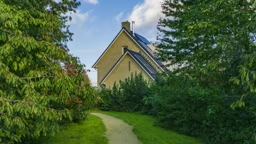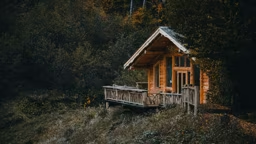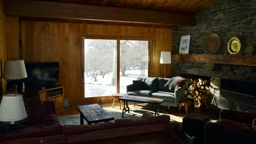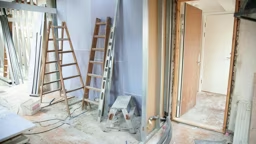Your view of the lake from your hilltop cabin is breathtaking. But the downside to your picture-perfect perch? Getting to the shoreline – and back up again – means traversing a slippery, erosion prone slope. Take steps to travel safely to and from the water’s edge; build a staircase.
The first step
First consider the angles. A comfortable staircase typically runs at a 30- to 35-degree angle. Your builder may be able to construct steps on a slightly steeper hill. If, however, your slope is more cliff-like or very long, consider installing an incline lift. Also consider installing landings if you have a long slope or require a lot of stairs. Landings every ten steps, or so, will visually break up the staircase and provide resting spots – something you’ll come to appreciate.
Get zoned
Local zoning ordinances often guide shoreland staircase design. Your ordinance may stipulate a shoreline access corridor – an area in which you’re permitted to remove or prune trees, shrubs and other vegetation to form a pathway to your shoreline. You will likely need to locate your staircase within the width of your permitted shoreline access corridor and away from environmentally sensitive areas. Natural building materials and color may be mandated to better blend with surroundings. Especially with steep slopes, it’s wise to construct the staircase to minimize erosion, rainwater run-off and disruption to habitat pathways. Governed or not, these are all important aspects of staircase design.
Elevate and vegetate
A great way to control run-off and reduce erosion is to elevate, rather than excavate, your staircase. Because an elevated staircase rests on footings, soil disruption is only needed at footing locations. Little or no grading is necessary. Also, an elevated staircase enables native plants to continue to grow beneath it, helping to control erosion and run-off.
Vegetation slows rainwater runoff, allowing moisture to soak into the soil. A native plant’s root system hangs onto your hill, making it more stable. By preventing rainwater runoff and soil nutrients from seeping into your lake, you are keeping it clean and beautiful. Allowing native plants under and around your staircase also will help it blend with natural surroundings.
Stair rules
Not only does your local government have rules, but your staircase does too. The staircase builder’s “Rule of 25” is fundamental to comfortable, safe steps. It means that the sum of the height of two risers plus the width of one tread should equal approximately 25 inches. (There is some wiggle room here.) The ideal riser height is about 7 inches, and the ideal tread width is about 11 inches.
Remember, it is prudent, and generally part of code, that riser height and tread width remain consistent throughout a staircase. Don’t get tripped up on shoreland staircase rules and ordinances. Check with your local government and think preservation – of your body, hill and lake.
Marti Jentz’s stairway to heaven consists of 28 steps.











